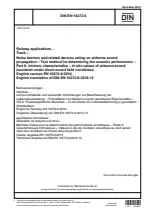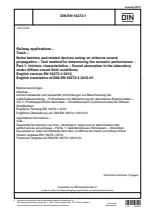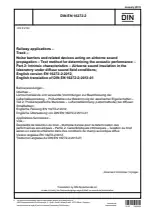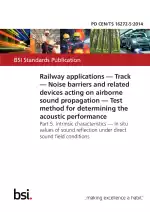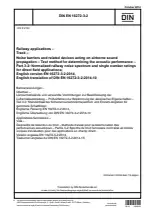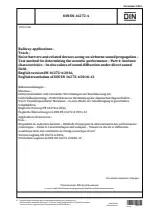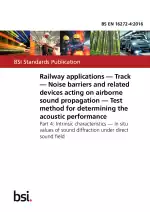Railway Applications - Track - Noise Barriers and Related Devices Acting on Airborne Sound Propagation - Test Method for Determining the Acoustic Performance - Part 6: Intrinsic Characteristics - In Situ Values of Airborne Sound Insulation under Direct Sound Field Conditions
Also Known As:
The DIN EN 16272-6 standard focuses on the testing and measurement of the acoustic performance of noise barriers and related devices in railway applications. Specifically, this standard provides a test method for determining the intrinsic characteristics of airborne sound insulation under direct sound field conditions.
The purpose of this standard is to assess the effectiveness of noise barriers in reducing airborne sound propagation in railway environments. It aims to measure a quantity known as the sound insulation index, which is representative of the intrinsic characteristics of the sound insulation provided by these barriers.
It is important to note that this standard only applies to noise barriers and related devices that specifically act on airborne sound propagation. Other devices such as those used for attenuation of ground-borne vibration or on-board devices are not covered by this standard.
| Descriptors | Acoustic properties and phenomena, Acoustic testing, Acoustics, Airborne noise emitted, Airborne sound insulation, Definitions, In situ, Infrastructure, Laboratory testing, Measurement, Measurement of airborne noise, Noise control, Noise control (acoustic), Noise protection walls, Noise reduction, Permanent ways, Product specification, Properties, Protective walls, Rail transport, Railway applications, Railways, Sheeting, Sound insulation measure, Sound propagation, Testing, Travel ways, Architraves, Sheets, Pavements (roads), Casing, Cages (machines), Roadways, Mouldings, Superstructure |
| ICS Codes | 93.100 - Construction of railways |
| Language(s) | English |
| File Size | 9.9 MB |

